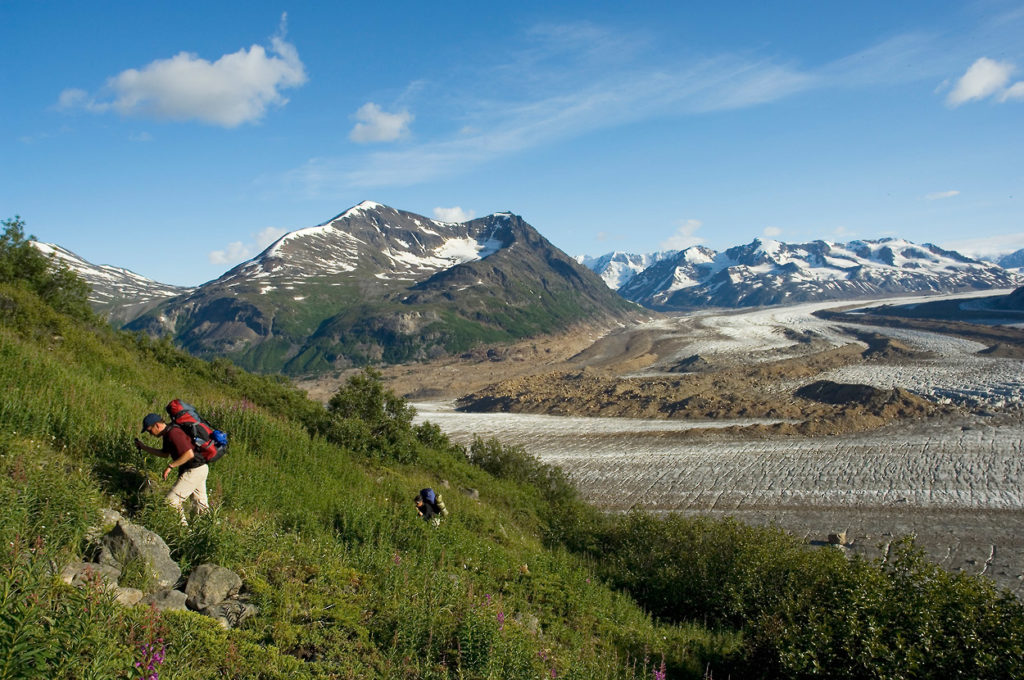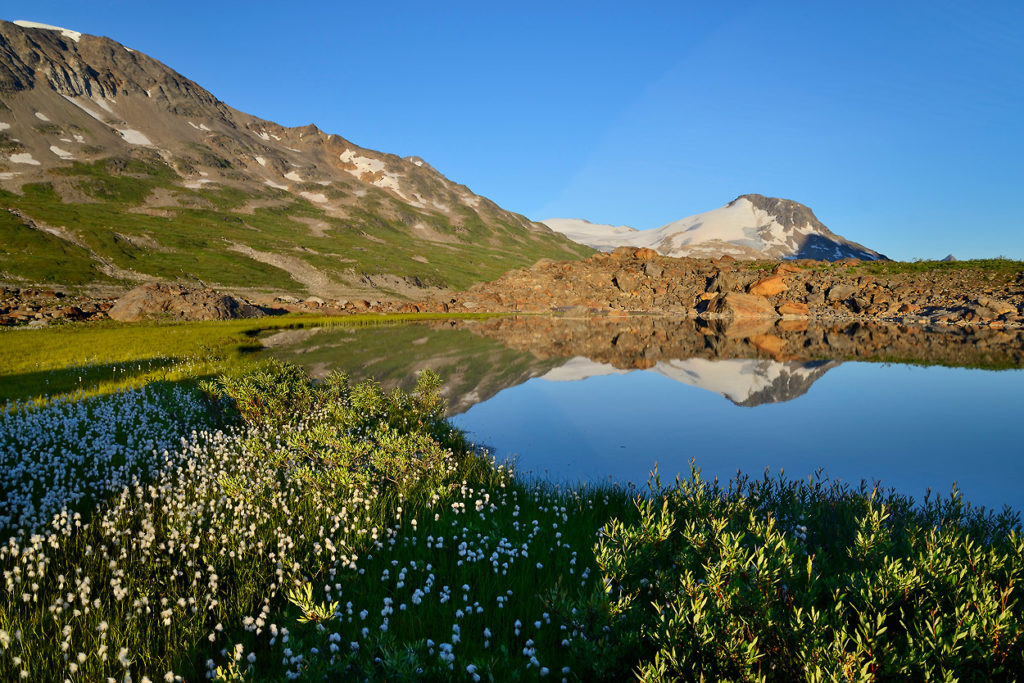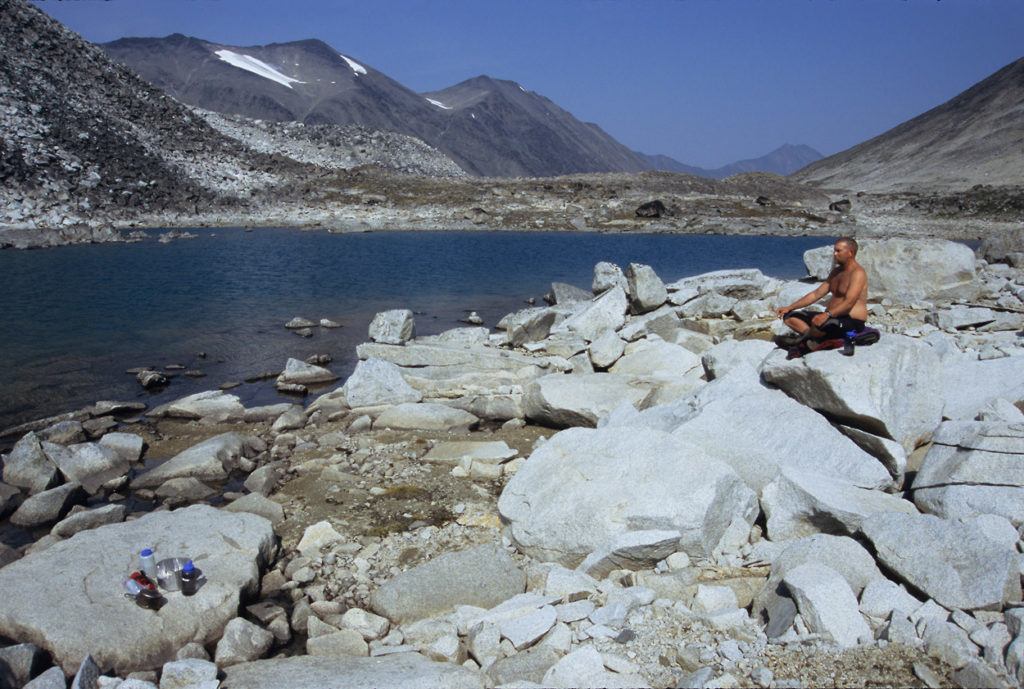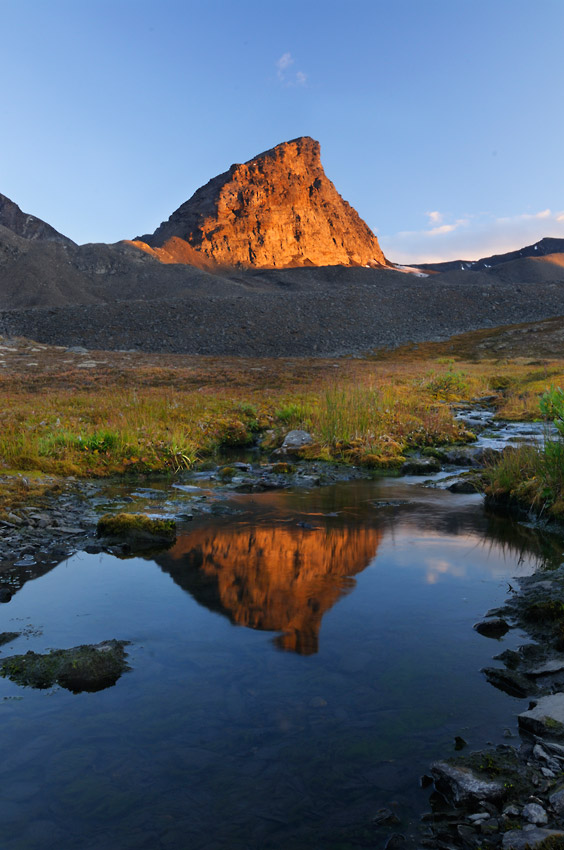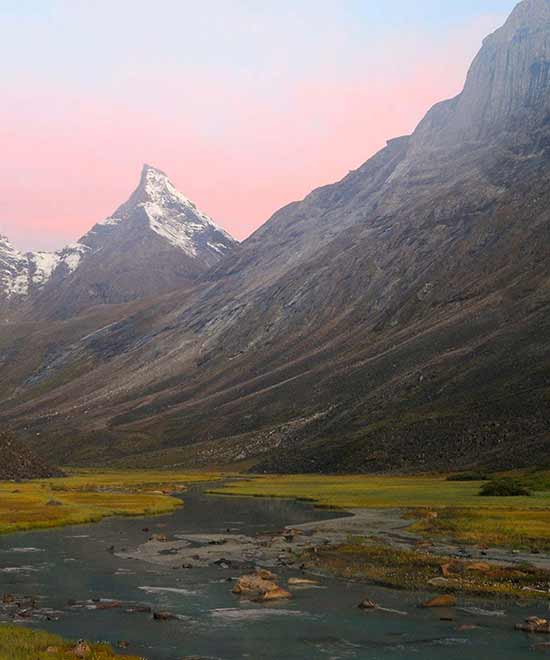The Trek
The Hiking
In a word, varied. In two words, really varied.
You’ll walk easy sections of wide open tundra and you’ll walk a few tougher sections (see “How Hard Is It?” below). Just as you begin to feel that you’ve got it dialed, the terrain changes yet again. You hike though another terrain and experience a different landscape yet again.
This breaks up your rhythm. Expeditions Alaska guide John Calder suggests this variation is a part of what makes it a challenging route; “You don’t find a groove; you get a pattern going, the terrain changes and it breaks and changes again. And again. And again.”
This keeps you engaged and focused, but is also more taxing than you might expect.
The Glaciers
Think “full of surprises”. It’s remarkable just how much these ice floes change year to year, even month to month.
They’re fascinating. Moulins, deep, steep holes that sink downward out of site keep you wondering. Crevasses are visible (and hence avoidable) as the ice will be snow free by mid-summer months at this elevation. The ice can be slick though in wet weather. We’ll bring some form of ice gripper (see “Trip FAQs below“).
The toughest sections of glacier hiking are typically the entrance and exit. Walking on the ice the easy part. Getting on to and off of the ice is often more of a challenge. Careful route-finding and a little scouting go a long way. You’ll be thankful for having an experienced guide here.
The Wildlife
Glacier landscapes typically don’t have abundant wild animals in them. Ice and rock isn’t productive sustenance for most critters. For a variety of reasons though wildlife seem to do well here.
Over the years I’ve seen moose, mountain goats, grizzlies and black bears, wolves, wolverine, foxes, weasels, marmots, ground squirrels, pikas here. Not all at once. Don’t expect high population densities of species and animals at every corner. But keep your eyes peeled and you just might get to spot some cool animals forging about the mountains here.
The Mountains
You’re not terribly high here. The highest pass we backpack through is about 6600′.
But the extent of the mountain range is impressive. Scramble up a nearby peak on a clear day and you’ll be astonished at just how far these mountain peaks continue. This is what infinite feels like.
How You See It
Is This Trip A Match With You?
Who’s This Trip For?
This is wild Alaska. You’ll find solitude, adventure, wilderness and more.
Well-suited for the intermediate to experienced backpacker, our adventure involves some moderate to strenuous hiking as well as bushwhacking through stands of alder and willow. It also rewards the hiker with a truly wilderness experience.
How Hard Is It?
Moderate – Strenuous.
Approximately 35-40 miles and the terrain can be challenging at times.
This trip is really awkward to gauge a difficulty rating for. Terrain is an impossible to thing to vette for.
Why Do We SO Love This Hike?
I can’t think of another hike that covers quite the diversity you’ll experience on this route. Glaciers, mountains, tundra, wildlife and several simple amazing subalpine passes. And how about Iceberg Lake itself? The lake disappears and reconfigures itself annually; the geologic term is jökulhlaup (or joukaloupe, pronounced “juke-ah-loop”).
Did I mention how incredible the campsites are here? I don’t always use the same campsites on each trip. There are so many simply fantastic campsites in this region. We camped within a few hundred of a massive calving glacial ice wall last summer. Next summer, we’ll see where we land.
Where Are We?

Trip Review
“Carl does all the thinking and work for you, which is great! When you are tired, hungry, burned out and just don’t want to use your brain anymore, Carl is there to figure things out. Where to camp for the night, when and where to ‘crock up’ and cross a river, and when it’s safe enough to eat a snack when a bear is off in the distance. And he prides himself on being drama free!” – Amy D
Trip Itinerary
The Iceberg Lake to Bremner Mines (Seven Pass Route) backpacking trip in Wrangell-St. Elias National Park is incredible. Like all the trips we run, the itinerary is somewhat fluid. Weather, hiker experience and many other factors determine the actual trip. For simplicity sake, let’s assume the trip dates are Aug 1 – Aug 10. Realize everything here is simply an example. I’ve actually completed this trip in 4 days, and I’ve also spent 12 days doing this route. I feel an 11 day trip is about perfect for this route – .







